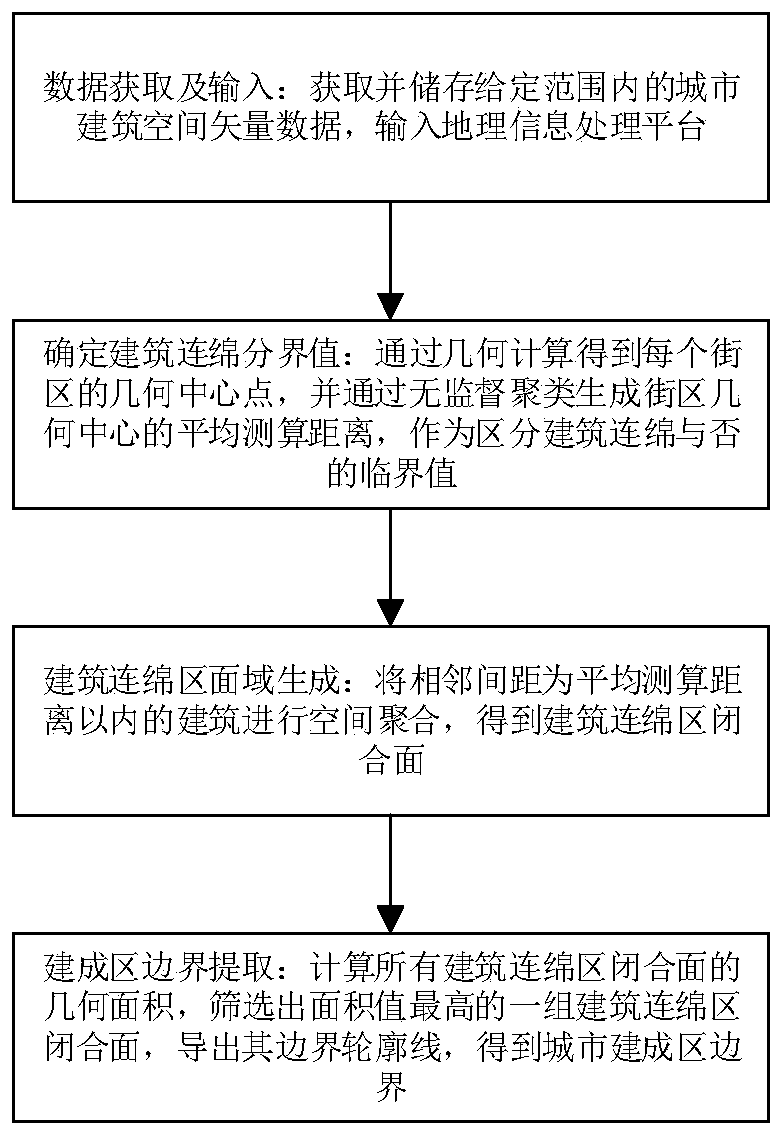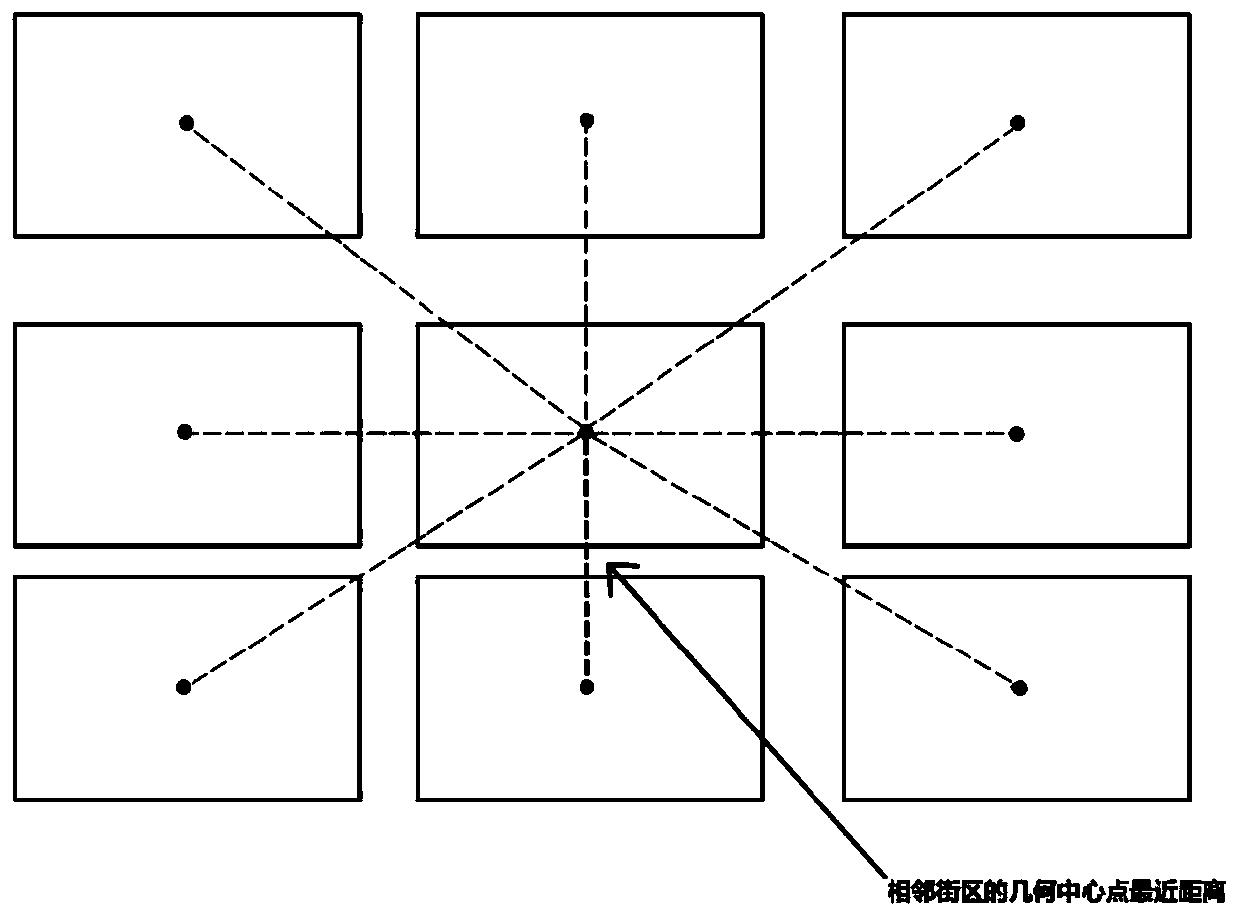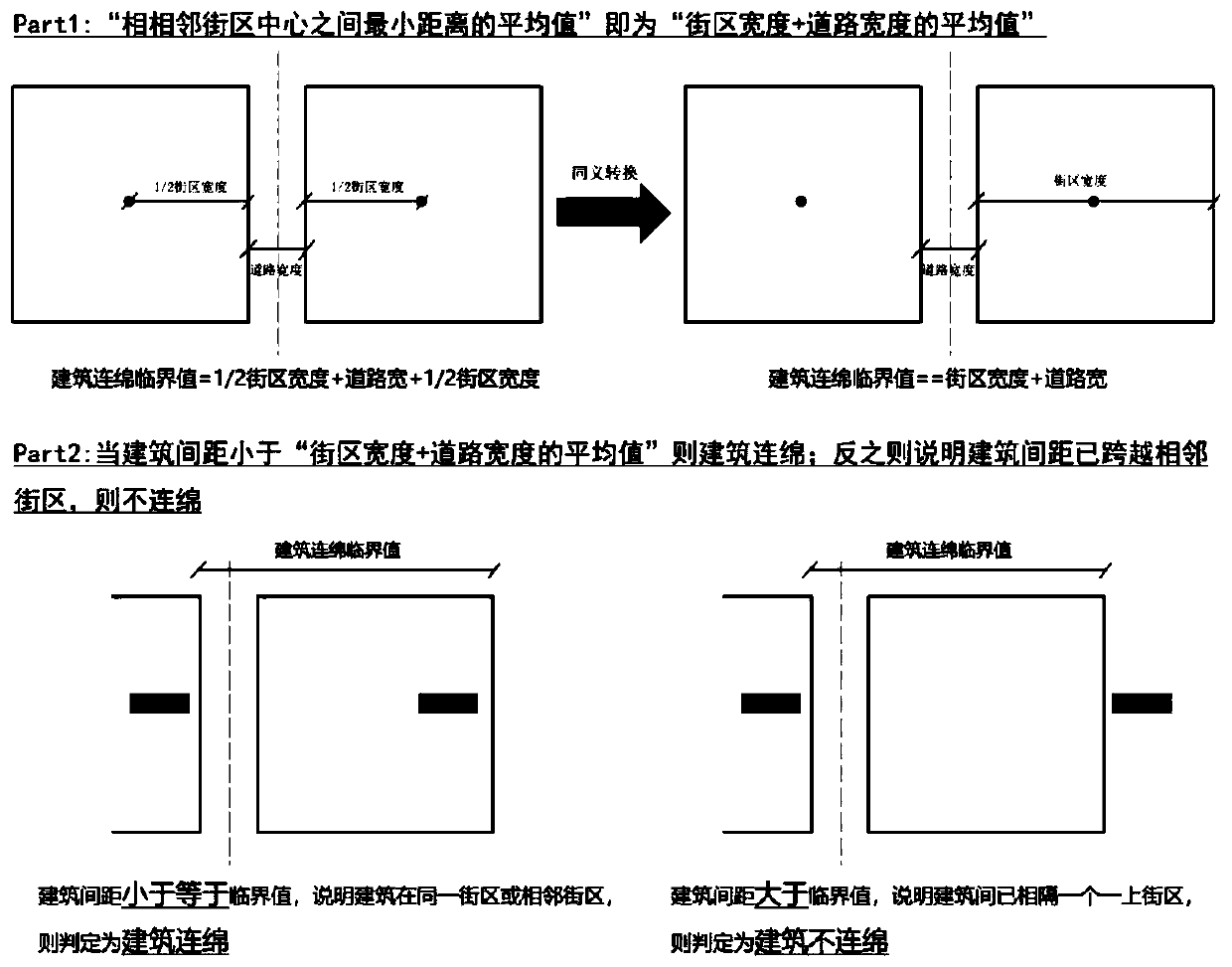Built-up area boundary identification method and device based on urban building space data
A technology for building space and boundary recognition, applied in character and pattern recognition, instruments, computer parts, etc., can solve the problems of random boundary recognition, time-consuming recognition methods, and high image quality requirements, and meet various index data. and vector analysis requirements, ensuring scientific and rationality, and ensuring the effect of operability
- Summary
- Abstract
- Description
- Claims
- Application Information
AI Technical Summary
Problems solved by technology
Method used
Image
Examples
Embodiment Construction
[0039] Such as figure 1 As shown, the embodiment of the present invention discloses a built-up area boundary recognition method based on urban building space data, including the following steps
[0040] Step 1): Data acquisition and input: Acquire and store urban building space vector data within a given range, and input it to the geographic information processing platform; wherein, the given range should not be smaller than the city center area, and the city center area is the corresponding The range of the central urban area defined in the latest version of the city's overall urban planning; the building space vector data includes polygonal block surfaces and polygonal building surfaces.
[0041] The space vector data can be obtained through planning bureaus and other relevant government departments. Among them, the building space vector data includes a polygonal block surface (which can also be generated by synthesizing a surface surrounded by road red lines), and the bloc...
PUM
 Login to View More
Login to View More Abstract
Description
Claims
Application Information
 Login to View More
Login to View More - R&D
- Intellectual Property
- Life Sciences
- Materials
- Tech Scout
- Unparalleled Data Quality
- Higher Quality Content
- 60% Fewer Hallucinations
Browse by: Latest US Patents, China's latest patents, Technical Efficacy Thesaurus, Application Domain, Technology Topic, Popular Technical Reports.
© 2025 PatSnap. All rights reserved.Legal|Privacy policy|Modern Slavery Act Transparency Statement|Sitemap|About US| Contact US: help@patsnap.com



